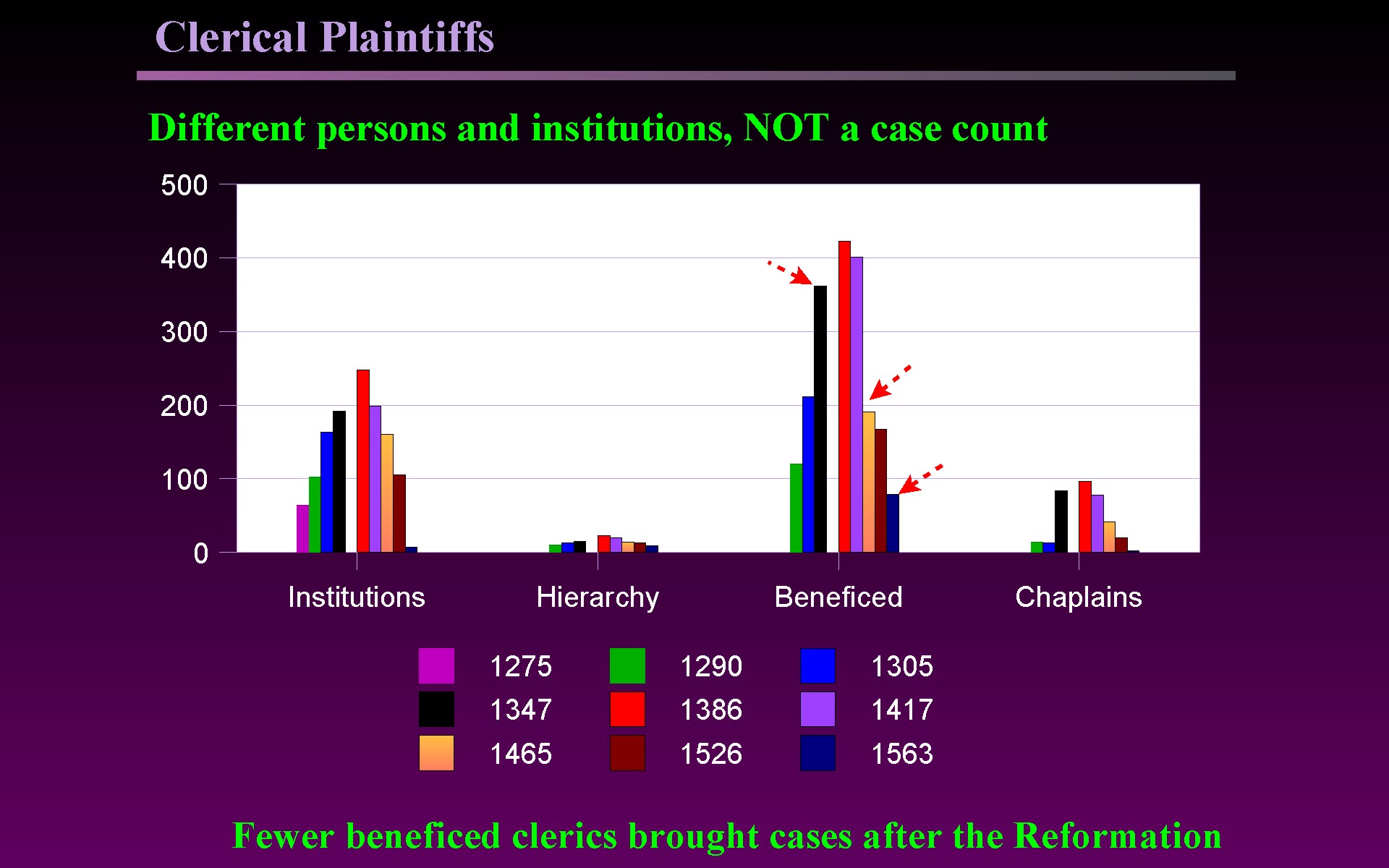


Clerics as Litigants
The absolute number of clergy who brought cases at common law was extremely high from the mid-fourteenth into the fifteenth century. "Clergy" in this context is used in the sense that the plea rolls seem to use it: not any clerical person in orders, but only those clerical persons who are rectors or vicars or of higher status (thus chaplains were not "clergy."). The number dropped substantially in the mid-fifteenth century and then sharply at the time of the Reformation. Both ecclesiastical institutions and chaplains followed this trend but less dramatically; of course the precipitate fall in ecclesiastical institutions as plaintiffs after the Reformation was the result of the dissolution of the monasteries. Chaplains seemed to follow the pattern set by clergy.
The increase in clerical plaintiffs through the fourteenth century may have been partly but not completely the rapidly increasing use of the court of common pleas to recover money owed (see the next frame): thus, to that extent the increase would not indicate any particular change relative to laymen. Hypothetically, the fall in the mid-fifteenth century was partially the result of lower litigation levels overall and partly the result of a continuing campaign to convince ecclesiastical persons not to litigate, at least at common law. The fall that occurred at the time of the Reformation was the result of the declining economic status and horizons of ecclesiastical persons and the exclusion of the ecclesiastical persons from commercial activity. See Palmer, Selling the Church (2002).
Methodologically, the lesson here once again is that merely counting things does not yield a conclusion; conclusions have to be derived from considering the numbers within the social and political context.

AALT Homepage





